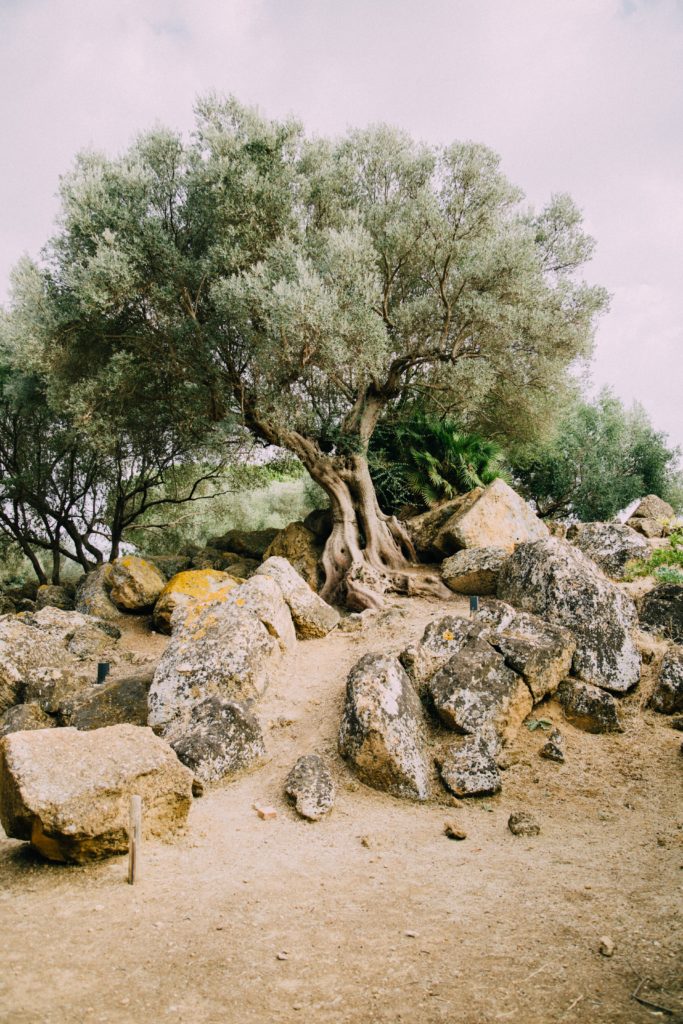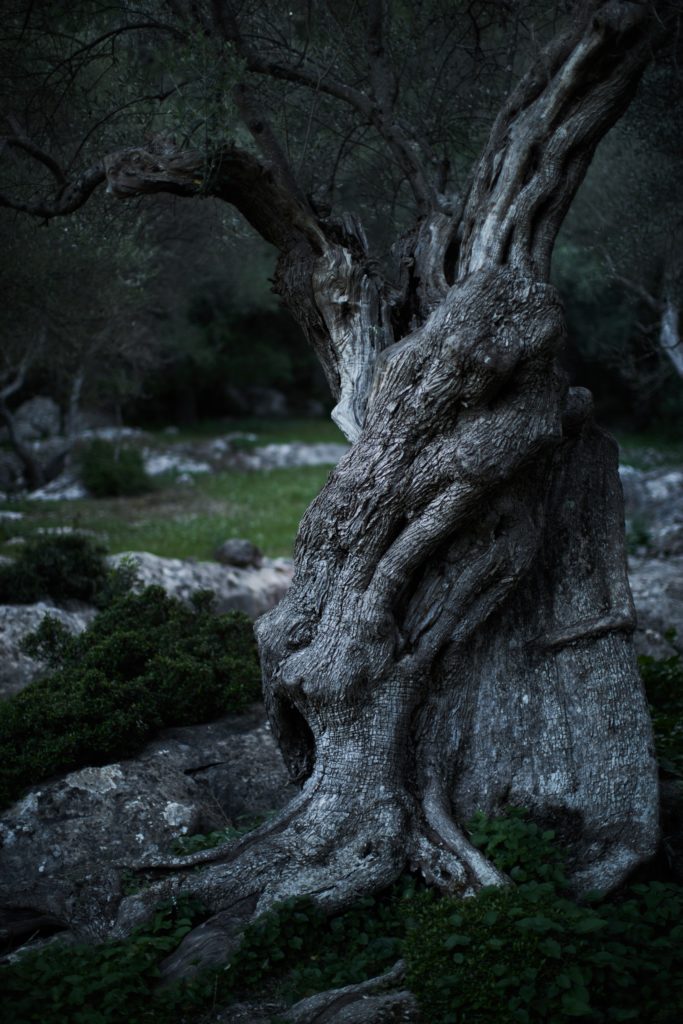
The Hebrew Bible provides many bridges to Jesus’s life–his mission, his ministry, his mighty work on the cross and, and his resurrection. The Passover lamb is an example–a saving sacrifice for the Hebrews in Egypt also pointing forward to the Messiah. The name John the Baptist gave his relative, Jesus, constructs this bridge. John saw Jesus walking toward him one day and said to some of his own disciples: “Look, the Lamb of God who takes away the sin of the world” (John 1: 29). The “Branch” prophecies create other prominent links between Jesus and the Hebrew Bible.

Isaiah says, “There shall come forth a Rod from the stem of Jesse, / And a Branch shall grow out of his roots. / The Spirit of the LORD shall rest upon him, / The Spirit of wisdom and understanding, / The Spirit of counsel and might, / The Spirit of knowledge and of the fear of the LORD” (Isa. 11: 1-2). And again, “For he shall grow up before him as a tender plant, / And as a root out of dry ground” (Isa. 53: 2a).
Jeremiah speaks of the Branch, a Messianic reference: “In those days and at that time / I will cause to grow up to David / A Branch of righteousness; / He shall execute judgment and righteousness in the earth. / In those days Judah will be saved, / And Jerusalem will dwell safely. / And this is the name by which she will be called: THE LORD OUR RIGHTEOUSNESS. / For thus says the LORD: ‘David shall never lack a man to sit on the throne of the house of Israel’ (Jer. 33: 15-17).
A “throne of the house of Israel”?
Yes, there’s been no throne of David for thousands of years. But David’s son Solomon prayed, dedicating the temple and said: “Therefore, LORD God of Israel, now keep what you promised to your servant, my father David, saying, ‘You shall not fail to have a man sit before me on the throne of Israel, only if your sons take heed of their way, that they may walk before me as you have walked before me’ ” ( I Kings 8:25).
Many centuries later, God tells the prophet Zechariah, “I am bringing forth my servant, the Branch” (Zech. 3: 8b). “Thus says the LORD of hosts, saying: ‘Behold, the Man whose name is the BRANCH! / From his place he shall branch out, / And he shall build the temple of the LORD; / Yes, he shall build the temple of the LORD. / He shall bear the glory, / And shall sit and rule on his throne; / And the counsel of peace shall be between them both’ ” (Zech. 6: 12-13).
Smith’s Bible Dictionary says: “The promised Messiah is described as a netser, i.e. a shoot, sprout, of Jesse, a humble and despised descendant of the decayed royal family. Once (Acts 24: 5), the term ‘Nazarenes’ is applied to the followers of Jesus by way of contempt. The name still exists in Arabic as the ordinary designation of Christians” (biblehub.com, “Nazarene”). New Testament writers join the name Nazarene—one from Nazareth—with the Hebrew verb, netser, a shoot, sprout, or branch. Though obliquely, both Matthew and Luke refer to the Branch. Matthew writes, “And he came and lived in a city called Nazareth, that it might be fulfilled which was spoken by the prophets, ‘He shall be called a Nazarene’ ” (Mat 2: 23).
A New Testament Zacharias will concur as he celebrates the birth of his son, John.

Zacharias and Elizabeth are the Abraham and Sarah of the New Testament. This righteous couple, both descendants of Aaron, had no children. But Elizabeth, like Sarah, has a miracle baby in her old age. This child will be unusual in more ways than one. The kinswoman of Elizabeth, a young girl from Nazareth, will soon have a child also. The son of Elizabeth and Zacharias will not just be related to Mary’s son, Jesus. John will become his forerunner, the voice of one crying in the wilderness,” Isaiah spoke of. He would “make straight the way of the LORD.”
John’s birth–unusual, yes–but his astonishing life will redefine the word. The son of Zacharias and Elizabeth will become John the Baptist–his calling, that of a revolutionary prophet and martyr in Israel. Instead of following in his priest father’s footsteps, fulfilling priestly duties in the temple, he goes out into the Judean Wilderness and preaches a message that has nothing to do with the temple.
“Repent and be baptized!” he cries. And people flock to hear him. Many are baptized. His relative, Jesus, will later say of him, “Among those born of women, there has arisen no one greater than John the Baptist” (Matt. 11: 11).
At the time of his naming, John’s jubilent father, Zacharias, exulted in a prophetic outpouring, thanking God for the coming Messiah and prophetically addressing his baby son, saying: “And you, child, shall be called the prophet of the Highest, for you shall go before the face of the Lord to prepare his ways, / To give knowledge of salvation to his people by the remission of their sins, / Through the tender mercy of our God, whereby the dayspring from on high has visited us, / To give light to those who sit in darkness and in the shadow of death, to guide our feet into the way of peace” (Luke 1: 76-79, emphasis added ).

The Cambridge Bible for Schools and College explains that the word dayspring (in Greek, anatole) translates both the Hebrew motsah, “dawn,” of Jeremiah 31: 40 and tsemach, “branch,” Zechariah 3: 8 and Zechariah 6: 12.
A branch is like the “dayspring,” the dawn, because it springs up. The same word is used in the Greek of the Septuagint (“Nazareth,” biblehub.com ).
The Messiah–a branch springing from the root of Jesse, a light to those who sit in darkness, in the shadow of death.
from The Edgefield Advertiser, oldest newspaper in South Carolina
April 29, 2019
Photo credits: olive tree by Don Fontijn, ancient olive tree by Antoine Perier, olive branches by Samuel Zeller, dawn by Angel Felix Nieto.
All photos from unsplash.com
Recent Comments